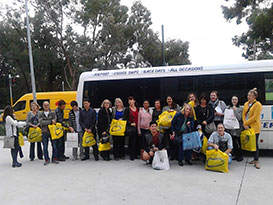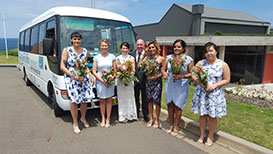The Sydney Airport, located in Mascot, was a bull paddock until the early 20th century. In 1919, aviator Nigel Love was looking for a location upon which an aviation company for Sydney could be established. The location in Mascot appealed to him as it was a perfect flat surface; such a surface being the product of its use as a cattle paddock for so long.
Love established the Sydney Airport airfield in 1919 as a private enterprise on a three year lease from the Kensington Race Club (the area had been owned by the Race Club and also featured an adjacent racetrack). Love had a hangar and all the appropriate facilities for a small airfield constructed. Love flew the first plane at the Sydney Airport recreationally in November 1919, and the first official flight (also with Love at the helm) at Mascot took place in January 1920.
The Commonwealth Government acquired Sydney Airport from the racing club following the cessation of Love’s lease in 1923. In 1924, regular commercial flights began at the site.
From the 1930s, Sydney Airport began its transformation, bringing it to the standards of the time. In 1933, the first gravel runways were constructed. In 1936, the airport’s name was changed to Sydney Kingsford Smith Airport, in honor of the great aviator Charles Kingsford Smith.
During the late 1940s, part of the adjacent Cooks River was built over in order to create more needed space. By 1949, there were three runways present, all ranging from 1-2km in length.
In 1966, following the decline of passenger ship travel and the subsequent increase in a new global demand for international air travel, the government began construction on an international air terminal.
The International Terminal at Mascot eventually opened in 1970.
During the 1970s, the north-south runway was expanded to become one of the longest in the Southern Hemisphere. During the late 1980s, construction began on a fourth runway; this being completed in 1994. This new runway aroused controversy among Sydney residents due to an increased amount of planes flying over suburbs in close proximity to the airport.
During the 90s, the International Airport received further modifications in order for it to be suitable for the upcoming Sydney Olympics in 2000.
In 1995, the Federal Government passed the Sydney Curfew Act 1995, which limited the operating hours of the airport. This law was passed in accordance to the wishes of the public, and its implications were that aircraft could neither take off or land at Sydney KS Airport during the hours of 11pm and 6am.
In 2002, the Commonwealth Government sold the Airport to Southern Cross Airports Corporation Holdings, who now own an 80% share.
The Airport underwent modifications during the 2000s-10s. This included the inclusions of new baggage systems and a new 7,300 square metres of space for a retail plaza and passenger waiting sections. Sydney Airport will undergo further modifications in order to make it suitable to cater for a forecasted 74 million passengers by 2033. The plan for such modifications was approved in 2014 by the Federal Government.
The Airport presently comprises three terminals.
Terminal One, was first opened in 1970. It serves as the international terminal. It is where most of the airport’s shops and other facilities are located, and underwent most of the refurbishments of the late 2000s and early 2010s.
Terminal Two is a domestic terminal, and former home of Ansett Australia, a domestic airline which ceased operations in 2002. It currently serves many other domestic airlines, including Jetstar, Tigerair Australia, and Virgin Australia.
Terminal Three is also a domestic terminal and its current building was completed in 1999. It was originally the home of Trans Australia Airlines. At present, it serves Qantas and Qantaslink flights after they moved their operations there in 2013. It features a special Qantas Club Lounge, an elite retail plaza and is a popular destination for plane spotters. Qantas recently sold its share of Terminal 3 back to the Sydney Airport for $535million.








